If you have any issues completing these instructions, please email us at hello@cherrylivelight.com.
Estimated time to complete this installation: 5-10 minutes
Requirements
- MacOS Catalina
- One of the supported digital audio workstations (DAWs), unless you plan on using manual MIDI control:
- Logic Pro X (Cherry 1.0 and up)
- REAPER (Cherry 1.1 and up)
- Pro Tools (Cherry 1.1 and up)
- Studio One (Cherry 1.2 and up)
- Cubase (Cherry 1.2 and up)
- Ableton (Cherry 1.9 and up)
- SoundFlow (Cherry 1.2 and up)
- Philips Hue Bridge with at least one compatible device connected. See the compatibility page for more details.
Step 0: Select Your Cherry Version
We recommend using the latest version of Cherry (2.0+) and the instructions on this page. If you already have downloaded Cherry 1.9.3 or lower and do not want to upgrade, click here for setup instructions.
Step 1: Download Cherry from our Home Page
Step 2: Connect Cherry to Hue Bridge
- Extract the downloaded .zip file by double-tapping it. The app icon should appear next to the .zip file.
- Run the newly-extracted app by double-tapping it.
- Mac OS may show an “internet download” prompt. Click Open to proceed.
- Mac OS may ask you to allow network connections. Cherry Live Light requires network access to control your Hue lights, so click Allow if this window appears.
- Cherry will open a main window and a license window. In the license window, enter your license or continue with the free trial.
- When the app opens, it will automatically search for a Hue Bridge. If it finds one, it will ask you to press the circular button on the bridge. Press the button and hold it for about 1 second before releasing it. You should not have to do this again unless you re-download the app or replace your bridge – next time you launch the app, it should connect automatically.
- Cherry should finish connecting to your bridge in a few seconds and you should see something like the image below!
- If you have allowed network connections, have waited 30 seconds, and still do not see a “Connected to Hue Bridge” status message like the image below, please follow the steps on our Troubleshooting page. If you are still unable to connect, please contact us using the email at the top of this page.
Step 3: Connect DAW to Cherry
Choose your DAW from the list below and follow the instructions.
Logic Pro X
- Open Cherry.
- Open Logic.
- Navigate to Logic Pro X > Control Surfaces > Setup… in the menu.
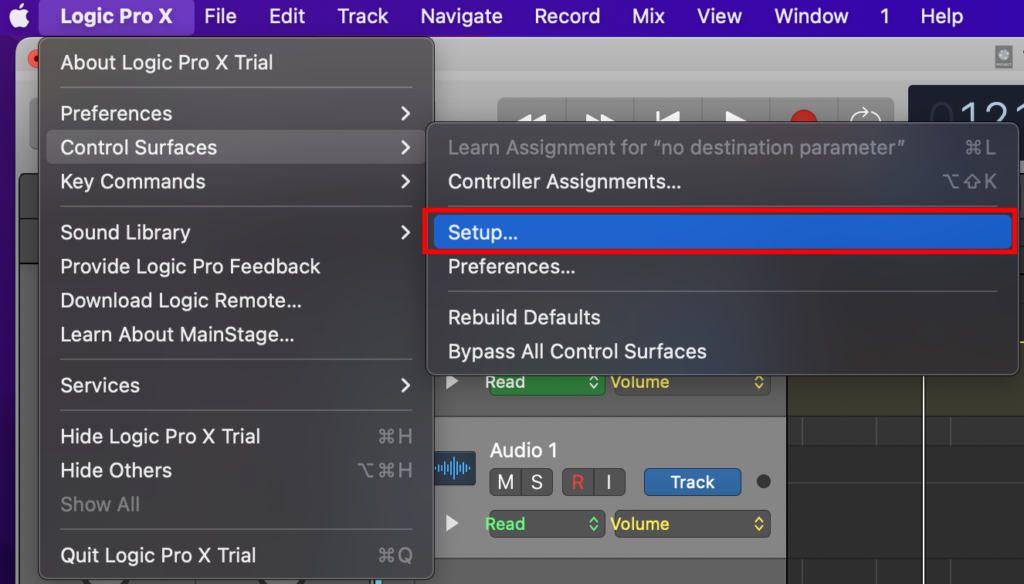
- Select New > Install… using the drop-down in the upper left of the Control Surface Setup window that appears.

- In the window that appears, select Mackie Designs HUI, then press Add button in the lower right.
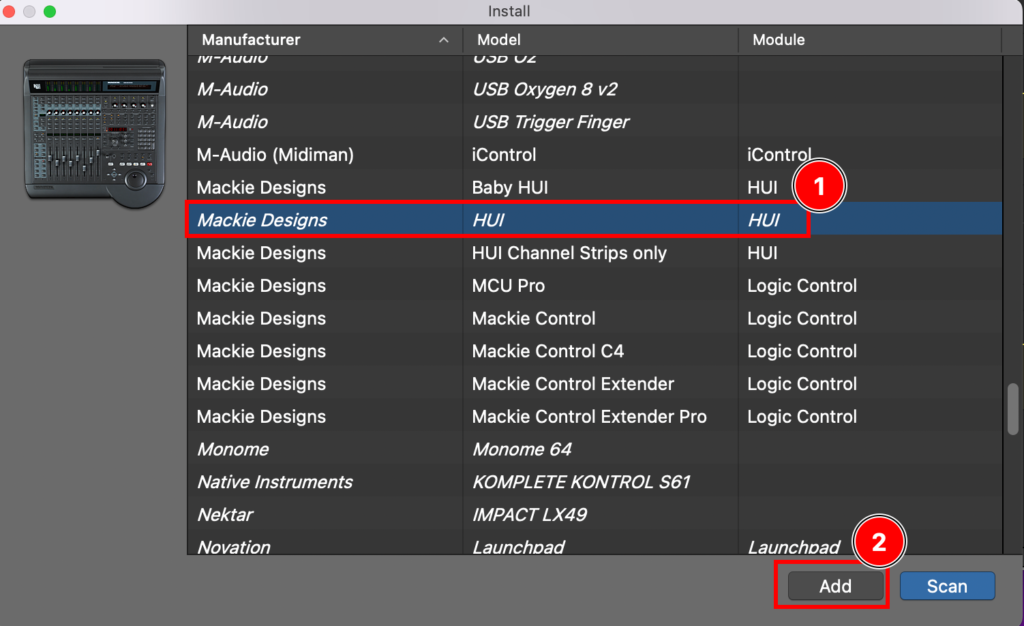
- Back in the Control Surfaces window, select the new HUI you just added and bring up the Inspector by pressing the i key.
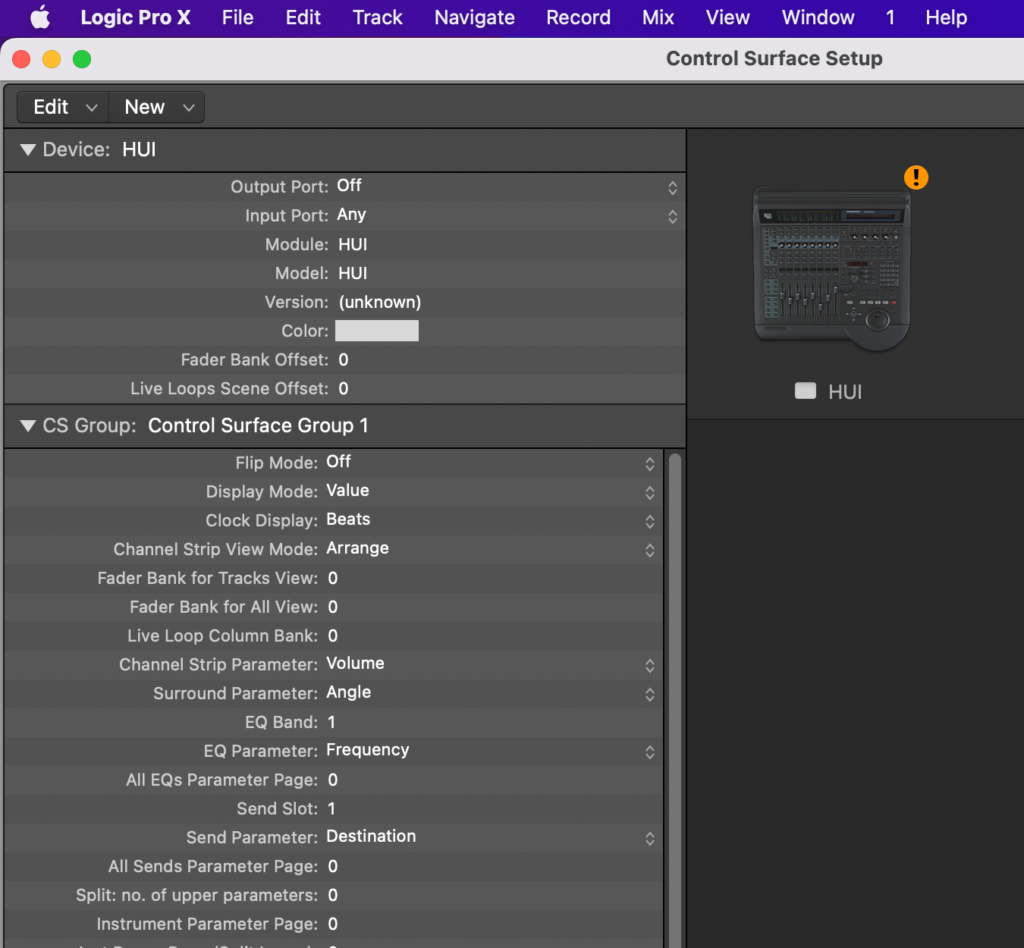
- Click the Output Port row and choose Cherry.
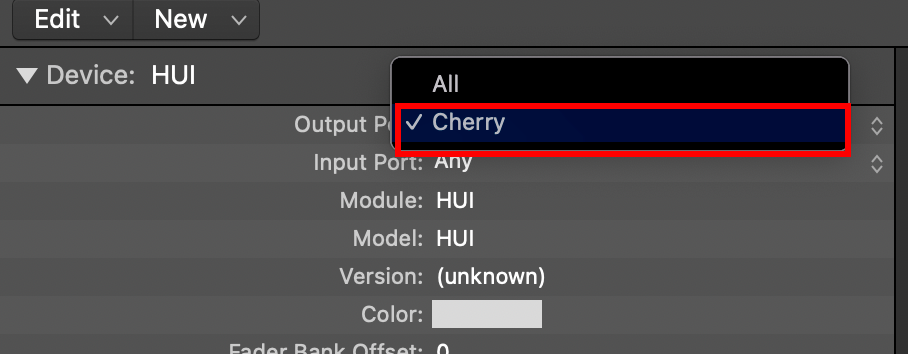
- Click the Input Port row and choose Cherry Out.
- Close the Control Surface Setup window.
REAPER
- Open Cherry.
- Open REAPER.
- Navigate to REAPER > Preferences… using the menu.
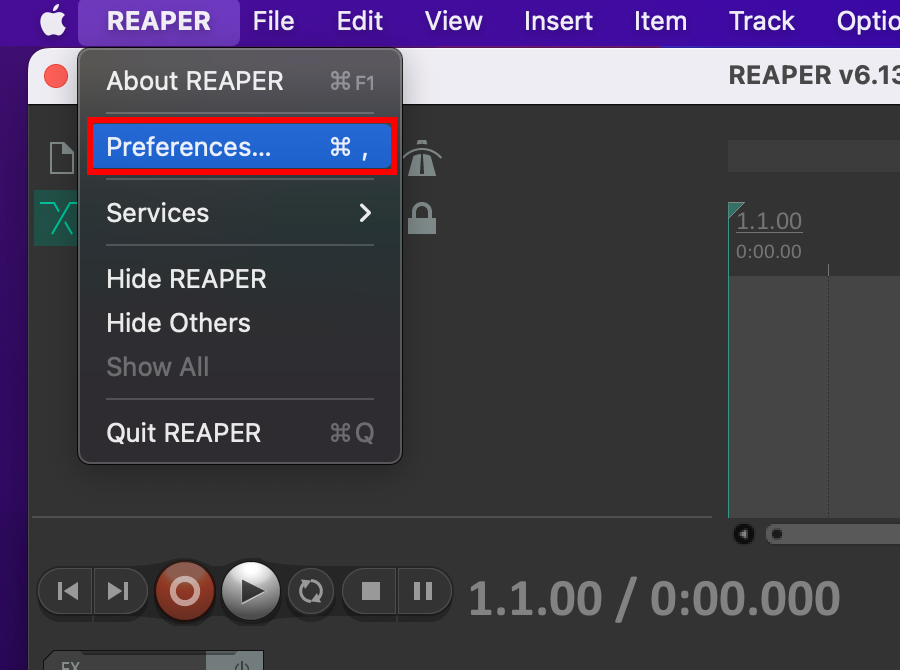
- In the window that appears, choose Control/OSC/web near the bottom of the left panel (you may have to scroll) and click Add.
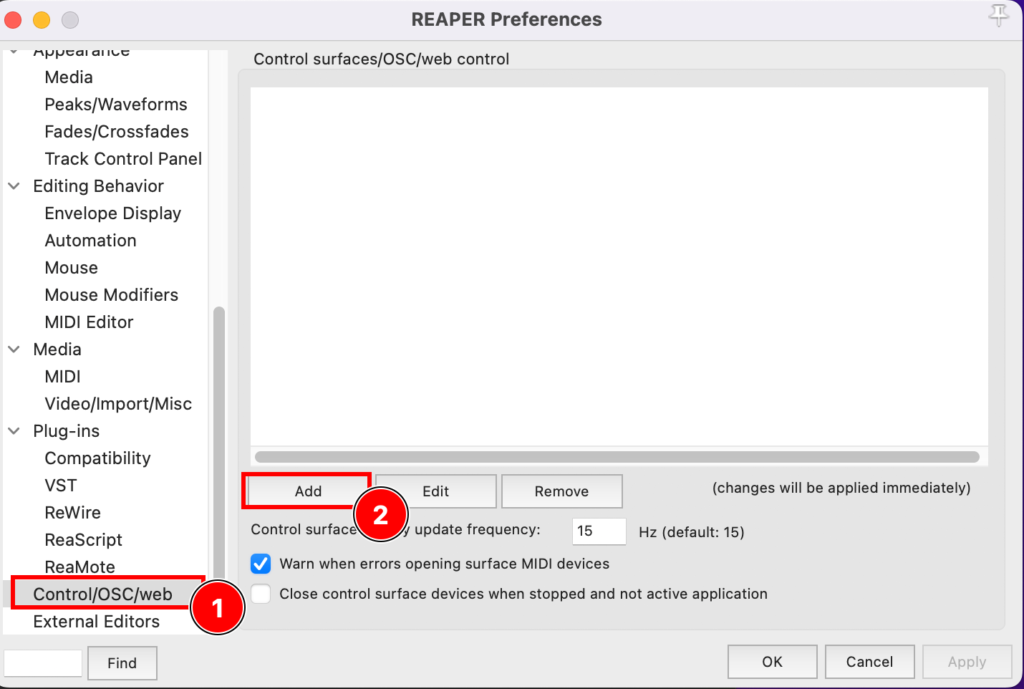
- In the Control surface mode drop-down, choose Mackie Control Universal.
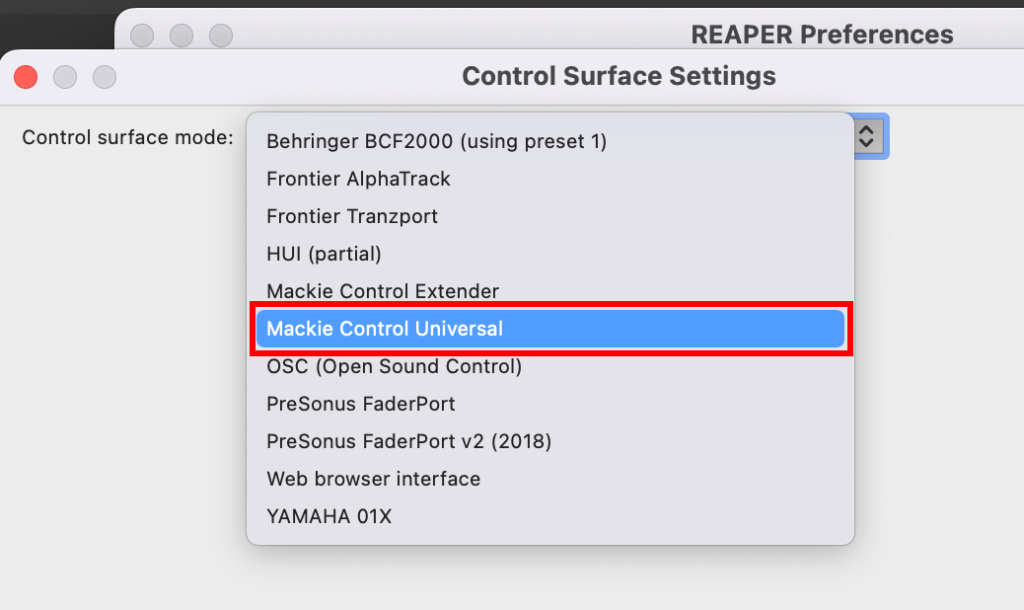
- In the MIDI input dropdown that appears, choose Cherry Out.
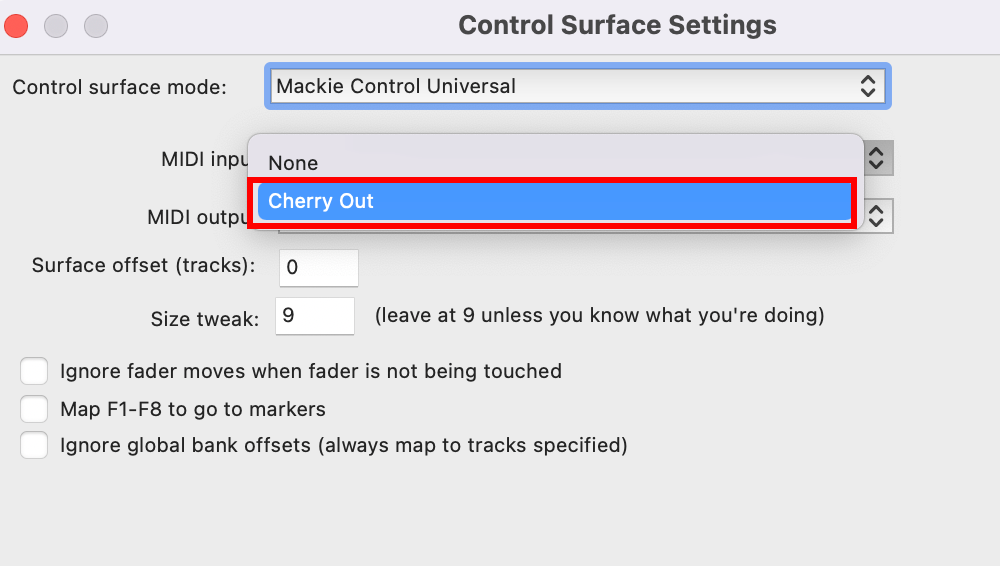
- In the MIDI output dropdown, choose Cherry.
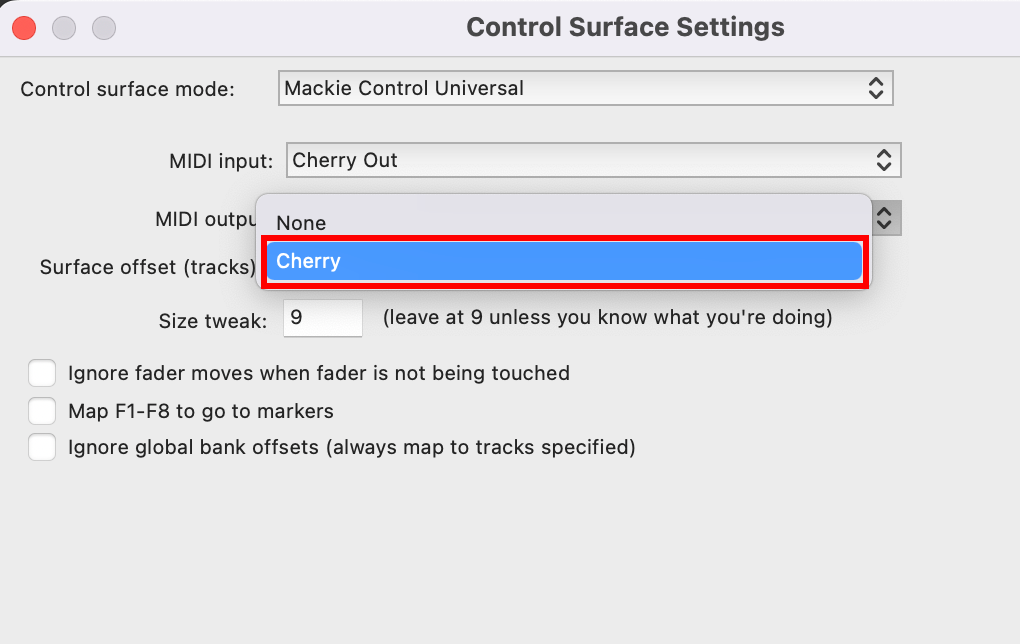
- Click OK. and your control surface should now be listed.
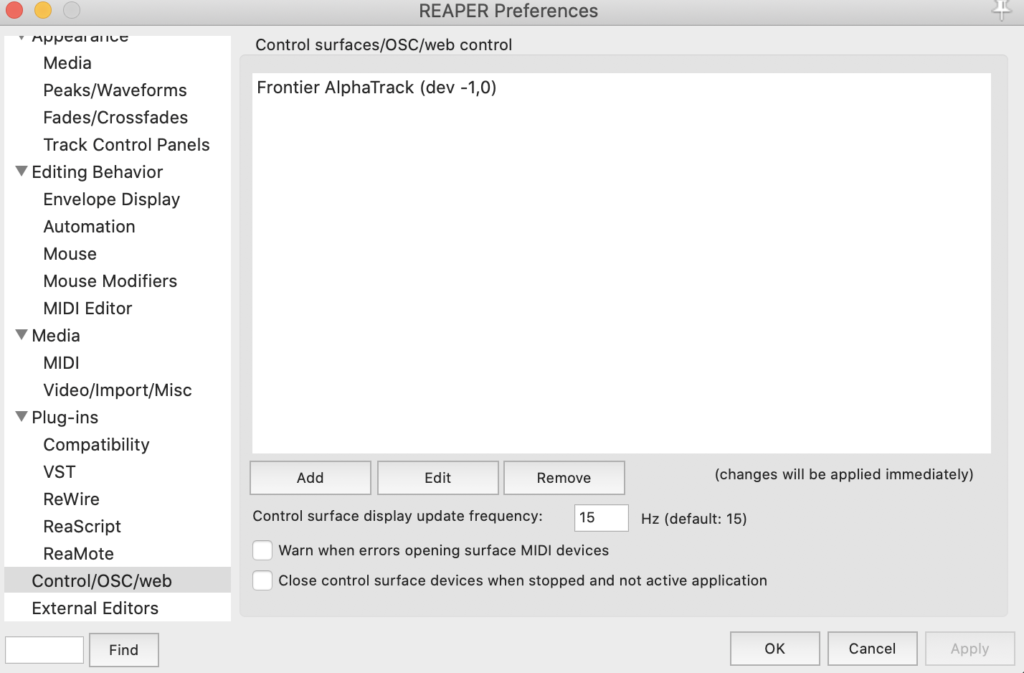
- Press OK to return to the main REAPER interface.
Pro Tools
- Open Cherry.
- Open Pro Tools.
- Enable the global MIDI input for Cherry. In the Pro Tools menu, open Setup > MIDI > MIDI Input Devices…
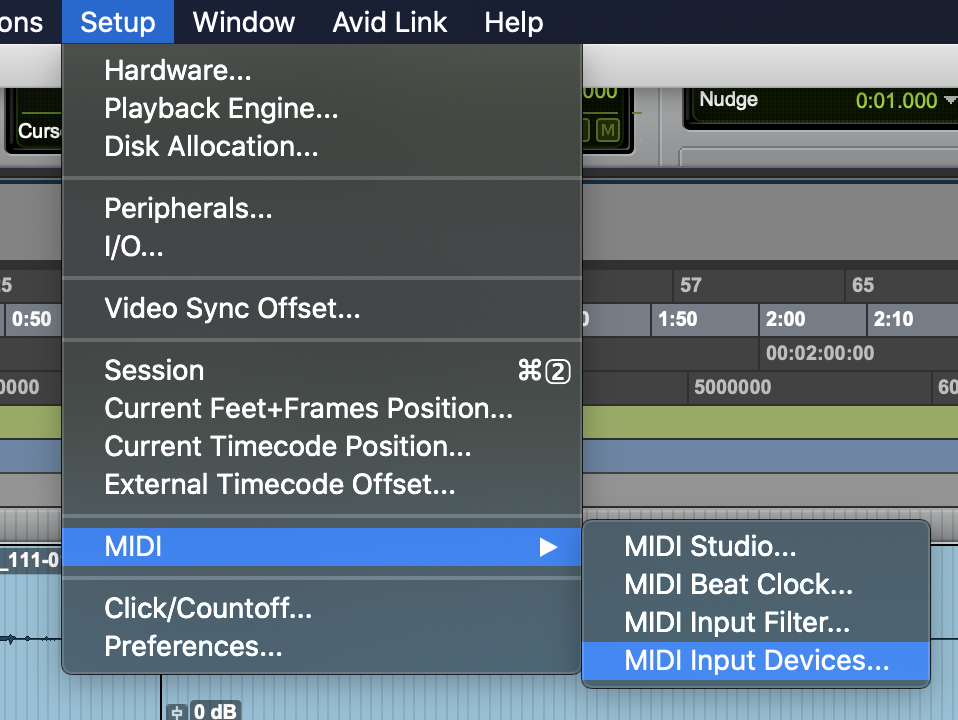
- In the MIDI Input Enable window that appears, check the box next to Cherry Out, then tap OK to close the window.
- Add Cherry as a HUI peripheral. In the Pro Tools menu, open Setup > Peripherals.
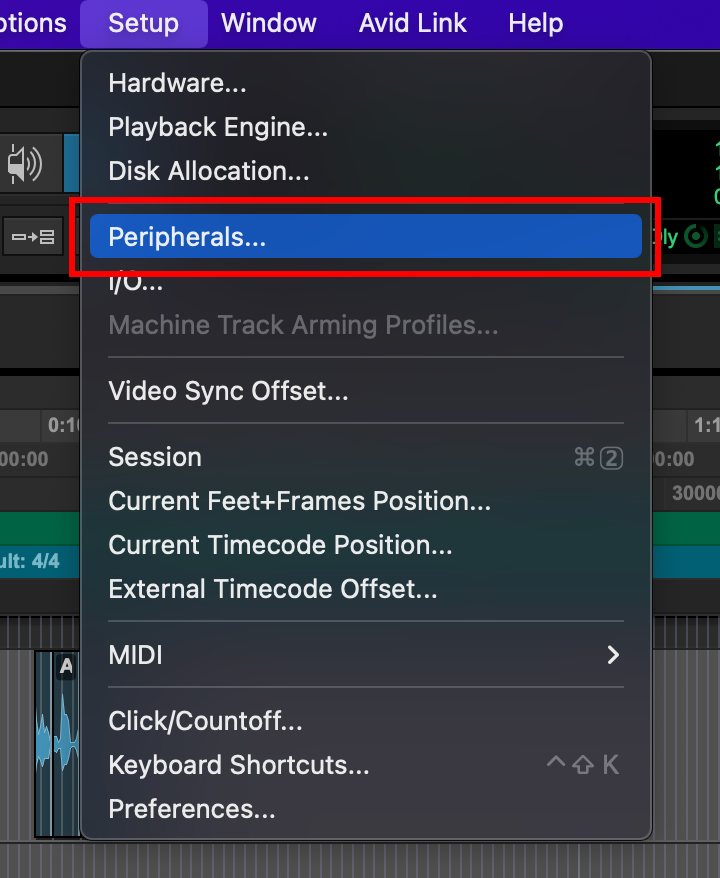
- In the Peripherals window that appears, go to the MIDI Controllers tab.
- Choose a row that is not already being used. Set the Type to HUI, Receive From to Cherry Out, Send To to Cherry, and leave # Ch’s at 8.

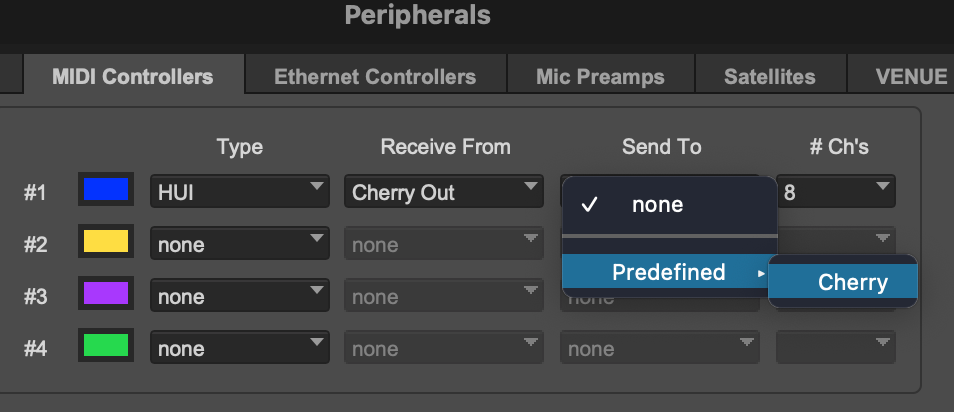
- Click OK to close the window.
- Restart Pro Tools.
Studio One 5
- Open Cherry.
- Open Studio One.
- Navigate to Studio One > Preferences… in the menu.
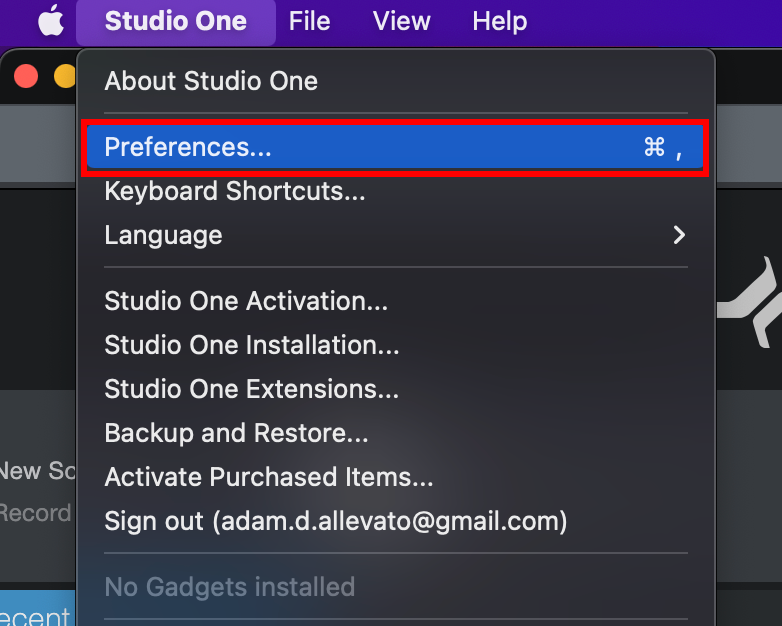
- In the Preferences window that opens, go to the External Devices tab and click the Add… button.
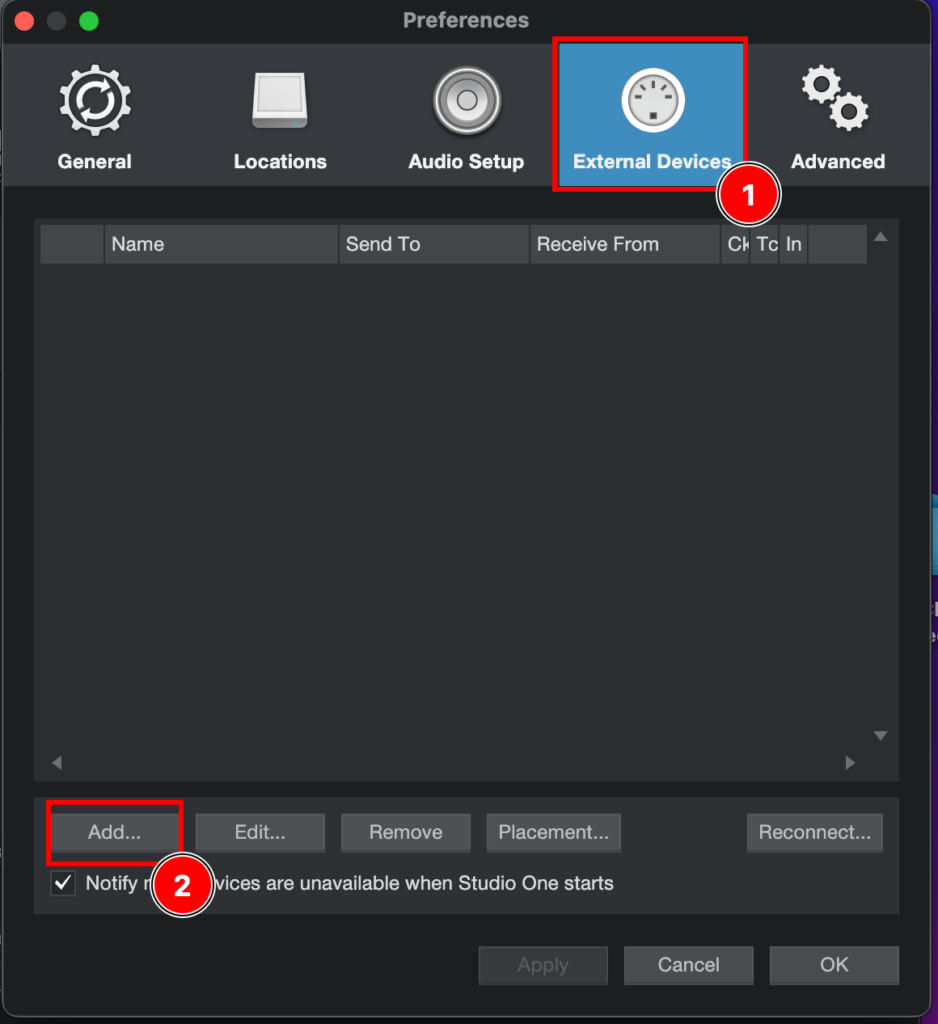
- In the Add Device window that opens, choose Mackie > HUI in the panel on the left (you may have to scroll to find it).

- In the Receive From dropdown on the right, choose Cherry Out.
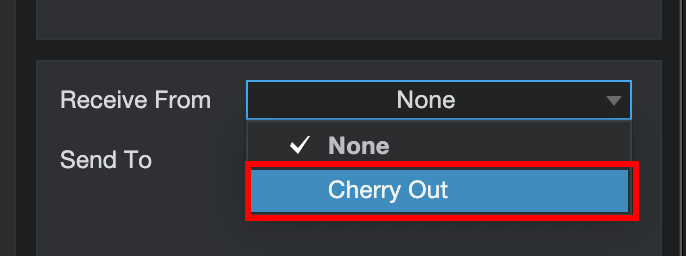
- In the Send To dropdown on the right, Choose Cherry.
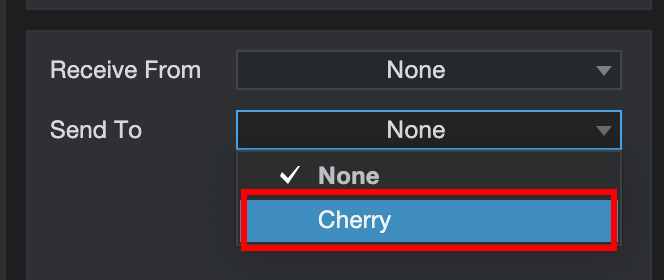
- Click the OK button to close the Add Device window. The new device should be listed.
- Click OK to close the preferences window.
- Restart Studio One.
Cubase
Tested on Cubase 12
- Open Cherry.
- Open Cubase.
- Open Studio > Studio Setup… in the menu.
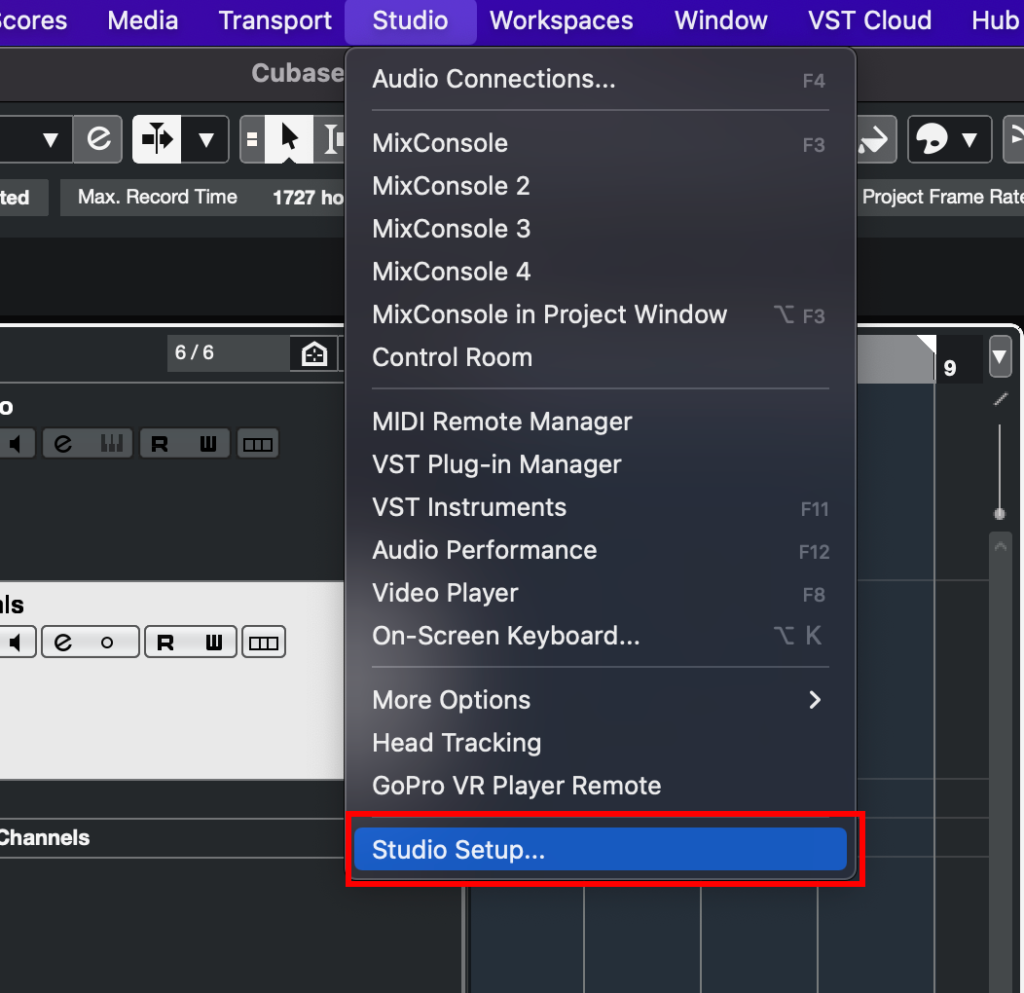
- In the Studio Setup window that appears, Choose Add Device, then Mackie HUI.
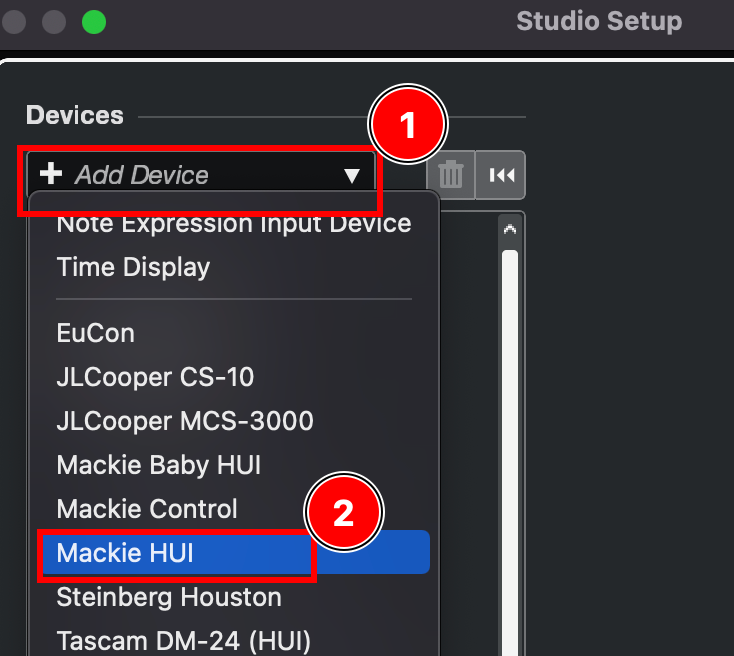
- In the MIDI Input drop-down, choose Cherry Out.
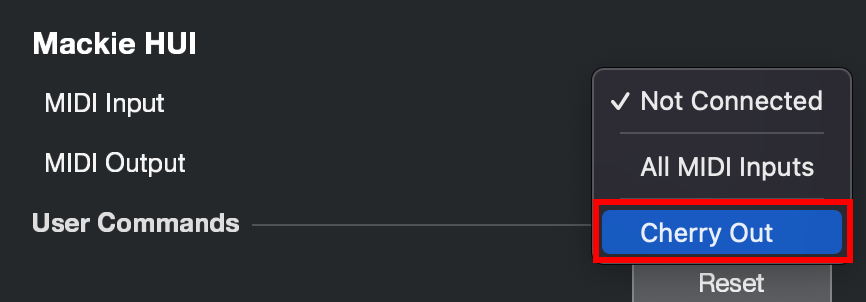
- In the MIDI Output dropdown, choose Cherry.

- Click Apply, then OK to close the Studio Setup window.

Ableton Live
Tested on Ableton Live 11
- Open Cherry.
- Open Ableton Live.
- Navigate to Live > Preferences… in the menu.
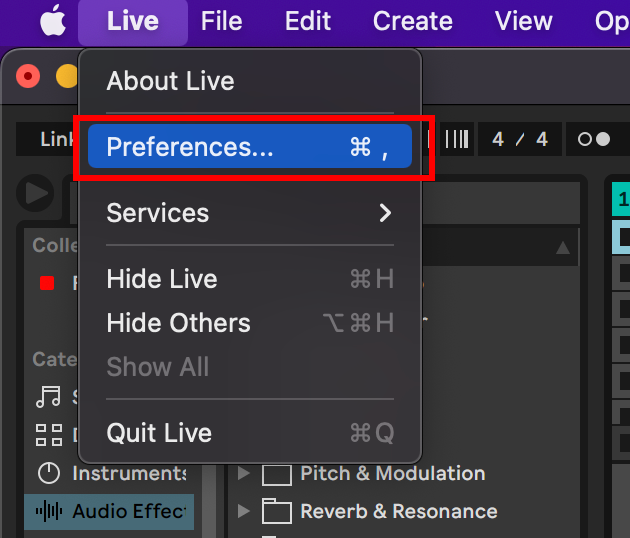
- Choose Link Tempo MIDI in the left tab list, then choose an empty Control Surface drop-down and choose MackieControl Classic.
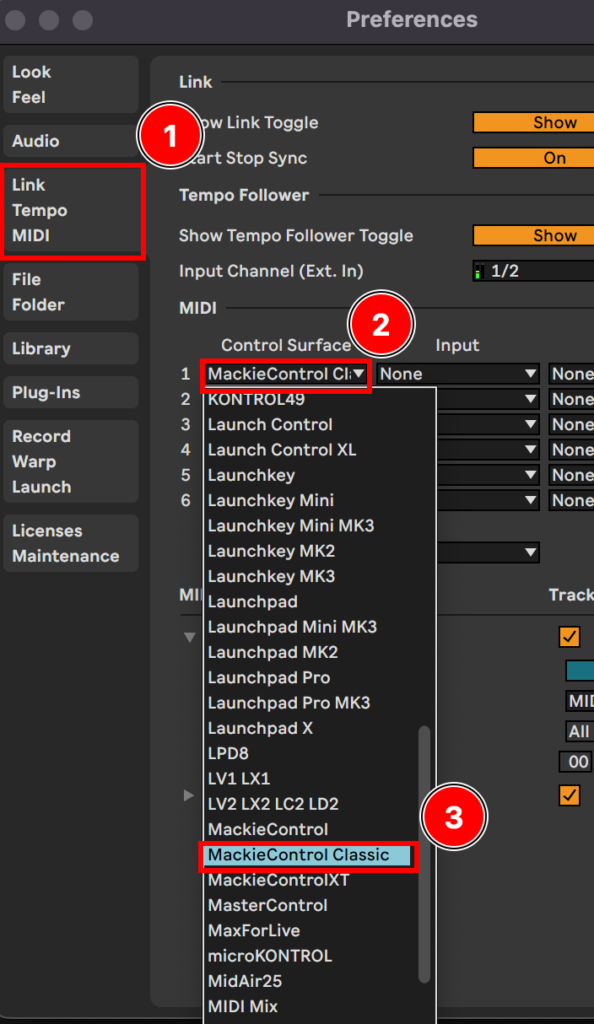
- In the Input drop-down, choose Cherry Out. In the Output drop-down, choose Cherry.
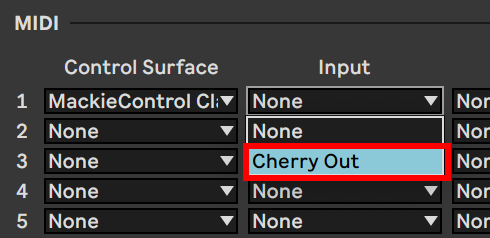

- Check all the boxes for Track, Sync, and Remote for the new control surface.
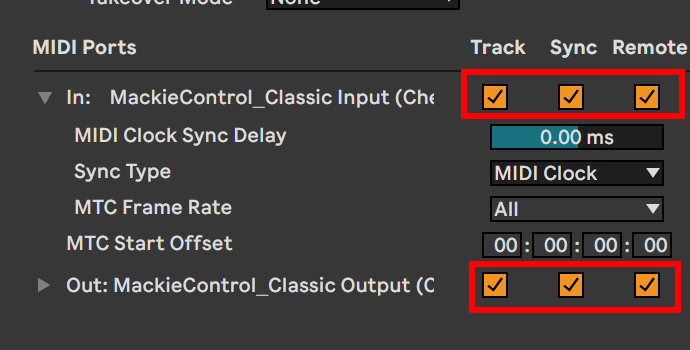
- Close the Preferences window.
SoundFlow/StreamDeck
The CherryLiveLight package (direct link) is available on SoundFlow thanks to Walter Everton. The package can be installed from there For manual setup, use the following SoundFlow code:
// Send "Start Recording" signal to Cherry
sf.midi.sendNote({
outputNum: 1,
midiNote: 95,
velocity: 0,
externalMidiPort: "Cherry",
});
// Send "Stop Recording" signal to Cherry
sf.midi.sendNote({
outputNum: 1,
midiNote: 95,
velocity: 127,
externalMidiPort: "Cherry",
});
// Send "Start Playback" signal to Cherry
sf.midi.sendNote({
outputNum: 1,
midiNote: 20,
velocity: 0,
externalMidiPort: "Cherry",
});
// Send "Stop Playback" signal to Cherry
sf.midi.sendNote({
outputNum: 1,
midiNote: 20,
velocity: 127,
externalMidiPort: "Cherry",
});
// There is not currently support for "armed" colors with manual MIDI.Manual MIDI Control
Cherry advertises itself as a MIDI device. This can be used for direct control by many devices and custom DAW setups.
Recording Color (highest priority)
- On: Note On command to the Cherry MIDI device, note 95, velocity 127.
- Off: Note On command to the Cherry MIDI device, note 95, velocity 0.
Playback Color (medium priority)
- On: Note On command to the Cherry MIDI device, note 20, velocity 127.
- Off: Note On command to the Cherry MIDI device, note 20, velocity 0.
